Disclosure: This article contains affiliate links. We may earn a commission from purchases at no extra cost to you, which helps our travel content.
The morning light spills across the Plaza Independencia, casting long shadows from the colonial buildings that stand as silent witnesses to Argentina's birth. I've spent a decade capturing Earth's wild corners on film, but there's something about Tucumán—Argentina's smallest yet most densely populated province—that demanded I slow down and simply observe. This northern Argentine gem sits in the shadow of the magnificent Aconquija mountains, with its capital San Miguel de Tucumán offering a perfect blend of historical significance (it's the birthplace of Argentine independence) and modern urban rhythm. After a week navigating its streets, parks, and surrounding landscapes, I've compiled this guide for fellow independent travelers who, like me, prefer to feel the pulse of a place through its transportation networks. Whether you're tracing the footsteps of Argentina's founding fathers or seeking adventure in the nearby Yungas cloud forests, this guide will help you navigate Tucumán's transportation options with confidence and minimal impact on both your wallet and the environment.
Arriving in Tucumán: Your First Steps
Most travelers arrive at Teniente General Benjamín Matienzo International Airport, a modest facility about 9km east of the city center. Unlike the chaos of Buenos Aires' airports, this one offers a gentler introduction to Argentina.
After collecting my weathered travel backpack, I found three main options for reaching the city:
Airport Remis (Private Car Service): Counters are located right at the arrivals area. Expect to pay about 1500-2000 pesos (rates fluctuate with Argentina's volatile economy). The journey takes around 20 minutes, depending on traffic. Drivers rarely speak English, so having your accommodation address written down is essential.
Radio Taxis: Slightly cheaper than remis services, these can be hailed outside the terminal. Always ensure they use the meter (ask for 'taxímetro').
Public Bus: For budget travelers, bus line 121 connects the airport to the city center for a fraction of the taxi cost. Look for the stop just outside the terminal area. The journey takes about 40 minutes and offers an immediate immersion into local life. Buses run approximately every 30 minutes from 6am to 10pm.
If you're arriving by long-distance bus from other Argentine cities, you'll reach Terminal de Ómnibus, located about 2km northwest of the city center. From here, local city buses and taxis provide easy connections to downtown accommodations.
My filmmaker's instinct for preparation served me well—I had downloaded the offline map of Tucumán to my phone and marked key locations before arrival. This simple step prevented the disorientation that often accompanies first moments in a new city.

💡 Pro Tips
- Download offline maps before arrival as internet connectivity can be spotty
- Have your accommodation address written in Spanish to show drivers
- Keep small denomination pesos for bus fares as drivers rarely provide change for large bills
Mastering Tucumán's Urban Bus System
The lifeblood of Tucumán's transportation network is its extensive urban bus system, locally known as colectivos. These buses connect every corner of the city for a fraction of what you'd pay for taxis.
My first morning in the city, I watched from a café on Calle 24 de Septiembre as colorful buses rumbled past, each bearing numbers and destinations in bold lettering. The system seemed chaotic at first glance—buses stopping briefly, locals hopping on and off with practiced efficiency—but reveals itself as remarkably functional once you understand its patterns.
The SUBE Card: Your first step should be acquiring a SUBE card, Argentina's rechargeable transport card. Available at kiosks and shops displaying the SUBE logo (usually around 200-300 pesos for the card itself), you'll need to load it with credit (called carga). Each bus ride costs approximately 80-100 pesos, depending on distance.
Understanding Routes: Unlike in many North American cities, buses don't always display comprehensive route information. Locals tend to know routes by number and key destinations. The most useful routes for travelers include:
- Line 2: Circles the city center, passing most major attractions
- Line 3: Connects downtown with Parque 9 de Julio
- Lines 101/102: Run between the bus terminal and Plaza Independencia
- Line 121: Airport connection
Reading Bus Stops: Look for posts with numbers indicating which lines stop there. Some have route maps, but many don't. I found that taking photos of route maps when I did find them was invaluable for later reference.
During my week exploring Tucumán, I witnessed countless small acts of community on these buses—elderly passengers being helped aboard, strangers holding items for mothers with children, animated conversations between driver and regular passengers. These moments revealed more about Tucumanian culture than any museum could.
One afternoon, when I was clearly studying my map with confusion, an elderly gentleman tapped my shoulder and in halting English helped me find the correct stop for the Casa Histórica. This willingness to assist travelers is something I've encountered repeatedly throughout Argentina's northern provinces.
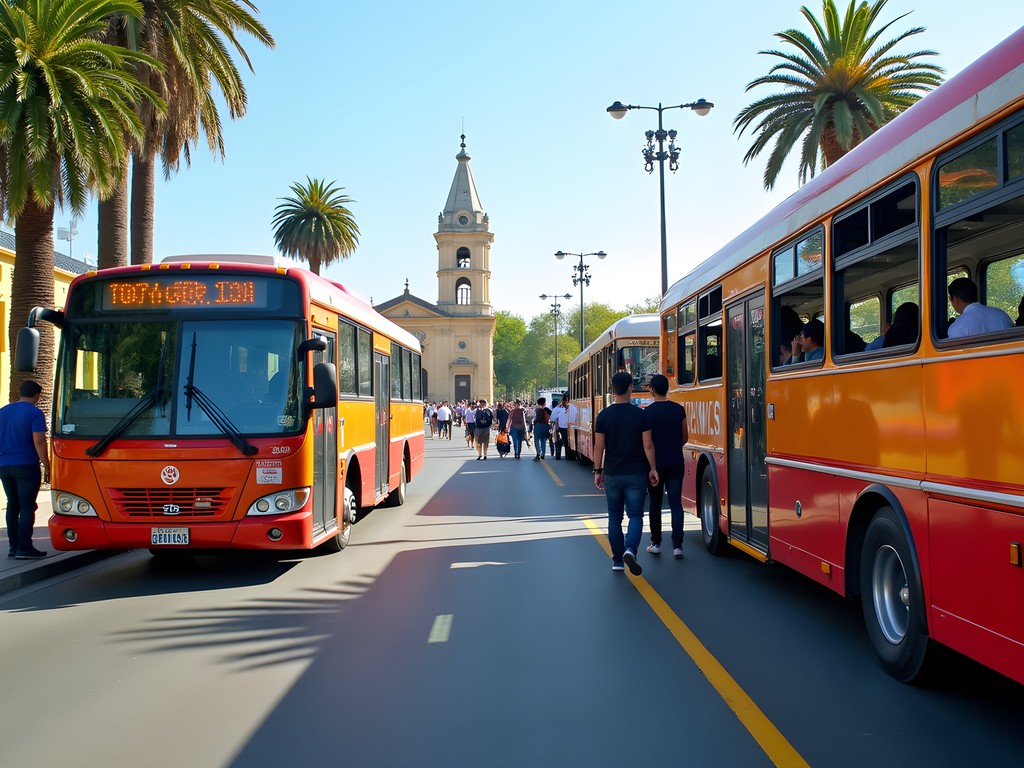
💡 Pro Tips
- Get a SUBE card immediately upon arrival to save money on transportation
- Take photos of bus route maps when you find them at major stops
- Ask locals for help—most Tucumanians are happy to assist lost travelers
Taxis, Remises & Ridesharing: Navigating with Ease
When Tucumán's spring afternoon thunderstorms roll in—as they often did during my stay—the city's taxis become a welcome sight. The black and yellow vehicles are plentiful in the city center, and rates remain reasonable compared to Buenos Aires or Mendoza.
Radio Taxis vs. Remises: Tucumán offers two types of car services that appear similar to visitors but function slightly differently:
- Radio Taxis: Black and yellow, can be hailed on the street, and use meters. These are your standard taxis.
- Remises: Unmarked cars (often black or dark colors) that operate more like private car services with fixed rates. They must be called or arranged through your accommodation.
For safety and transparency, I preferred radio taxis when traveling alone at night. During the day, the cost difference was minimal enough that convenience dictated my choice.
Understanding Taxi Meters: Tucumán taxis use meters (taxímetros) that calculate fares based on distance and waiting time. The base fare (bajada de bandera) starts around 300-350 pesos, with each subsequent 100 meters adding to the total. Most central city trips cost between 500-1000 pesos.
A note of caution: some drivers may suggest a fixed price rather than using the meter, particularly if they identify you as a tourist. While not always an attempt to overcharge, insisting on the meter ("Por favor, use el taxímetro") typically ensures a fair price.
Ridesharing Apps: Unlike major Argentine cities, Uber's presence in Tucumán is relatively new and service can be spotty. The local alternative, Cabify, operates more consistently. I downloaded both apps before my trip, along with a reliable portable charger to ensure my phone stayed powered throughout long days of exploration. This combination provided a safety net when navigating unfamiliar areas or returning to my accommodation after dark.
One evening, when filming sunset timelapses at Parque 9 de Julio left me with equipment too heavy for a comfortable bus ride, I used Cabify to return to my lodging. The driver, a former history teacher, provided an impromptu lesson on Tucumán's role in Argentine independence that no guidebook could match.

💡 Pro Tips
- Always confirm that taxi drivers will use the meter before entering the vehicle
- Save your accommodation address in Spanish on your phone to show drivers
- For safety when traveling at night, use radio taxis or ridesharing apps rather than hailing unmarked cars
Bicycles & Walking: Sustainable Exploration
The compact nature of Tucumán's historic center makes it ideal for exploration on foot or by bicycle. As someone who's documented environmental initiatives around the world, I'm always drawn to these low-impact transportation options.
Walking Tucumán: The colonial grid layout of central Tucumán creates a pedestrian-friendly environment where most major attractions lie within a 20-minute walk of Plaza Independencia. The shaded sidewalks offer protection from the spring sun, though they can be uneven in places—comfortable walking shoes proved essential for my daily explorations.
Mornings provide the most pleasant walking conditions, as afternoons often bring heat and potential thunderstorms. I developed a routine of early morning walks to capture the city awakening, followed by indoor activities during peak afternoon heat.
Safety note: While the central historic district is generally safe during daylight hours, some areas beyond the center require more caution, particularly after dark. Ask local advice before venturing into unfamiliar neighborhoods on foot.
Bicycle Options: Tucumán has embraced bicycle culture in recent years, with dedicated bike lanes (ciclovías) along several major avenues including Avenida Sarmiento and parts of Avenida Alem. The municipal bike-sharing system, TucuBici, offers an affordable option for residents but unfortunately requires Argentine documentation to register.
For travelers, several rental shops near Plaza Independencia offer daily and weekly rates:
- Bici Urbana (Calle Laprida 454): Offers city bikes for around 1500-2000 pesos per day
- Pedalea Tucumán (near Parque 9 de Julio): Mountain bikes suitable for city use and nearby trails
My most memorable Tucumán experience came during a dawn bicycle ride along Avenida Mate de Luna toward Parque 9 de Julio. As the rising sun illuminated the mountains beyond the city, I stopped to film the awakening urban landscape. A group of elderly cyclists passed, slowing to invite me to join their morning route. Though my Spanish is limited, the universal language of cycling created an immediate connection, and I found myself part of an impromptu tour led by lifetime residents who showed me hidden corners no guidebook mentions.
For those interested in sustainable transportation, Tucumán offers a glimpse of how mid-sized South American cities are gradually embracing alternatives to car dependency—a process I've documented in communities across several continents.
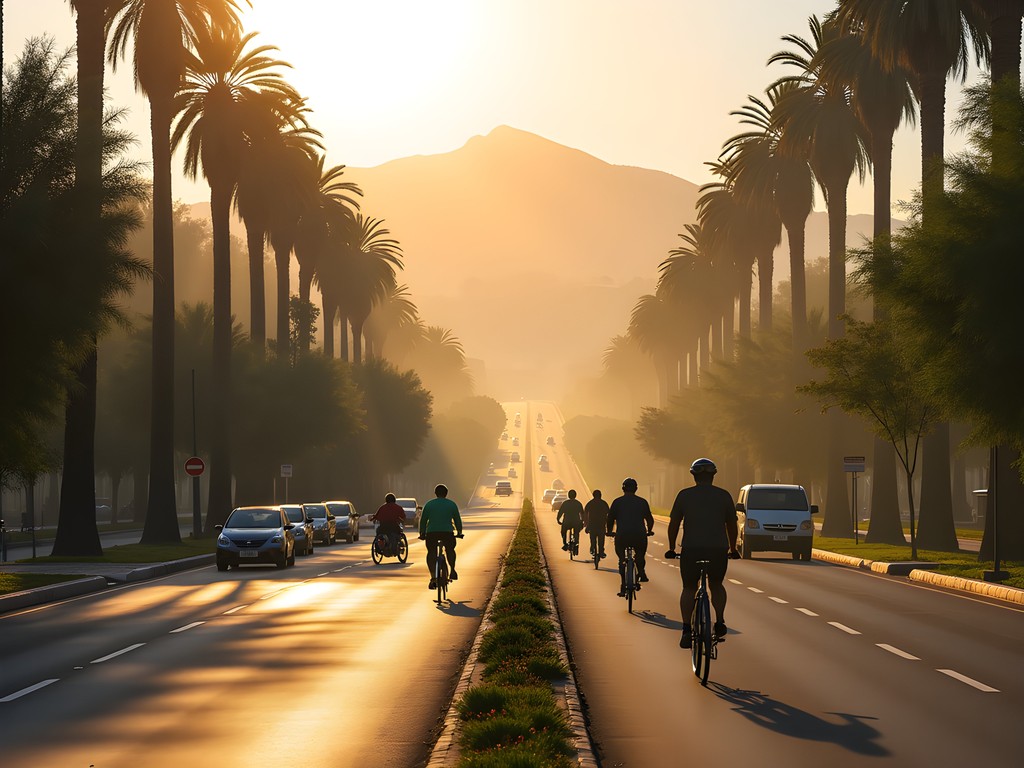
💡 Pro Tips
- Walk the historic center during morning hours when temperatures are pleasant
- Bring a small daypack with water, sun protection, and rain gear for Tucumán's changeable spring weather
- Ask your accommodation about reputable bicycle rental options nearby
Day Trips from Tucumán: Exploring Beyond the City
Tucumán's strategic location makes it an ideal base for exploring Argentina's spectacular northwest. Having spent years documenting natural landscapes, I couldn't resist venturing beyond the city limits to experience the region's ecological and cultural diversity.
Tafí del Valle: This mountain retreat sits approximately 107km west of San Miguel de Tucumán, offering an escape to cooler temperatures and breathtaking Andean scenery. The journey itself is half the experience, as the road climbs from lowland forests into cloud-draped mountains.
Getting There: Regular buses run from Tucumán's main terminal to Tafí del Valle, operated primarily by companies Aconquija and El Indio. The journey takes about 2-3 hours and costs approximately 1500-2000 pesos each way. Buses depart throughout the day, with more frequent service in the morning. For maximum flexibility, consider joining a tour or renting a car for this spectacular drive.
I captured some of my best footage along this route, where the ecosystem transforms dramatically with elevation gain. The transition from subtropical yungas forest to highland landscapes provides a visual lesson in ecological zonation that I've rarely seen so clearly defined elsewhere.
Ruins of Quilmes: These pre-Incan ruins represent one of Argentina's most significant archaeological sites, offering insight into indigenous cultures that thrived before European arrival. Located about 180km from Tucumán, it makes for a long but rewarding day trip.
Getting There: No direct public transportation connects Tucumán to Quilmes. Your options include: 1. Organized day tours from Tucumán (most convenient but least flexible) 2. Bus to Cafayate, then arranging local transport to the ruins 3. Rental car (my choice, as it allowed for stops to film along the route)
For this journey, I packed my travel daypack with extra water, sun protection, and snacks, as services along the route are limited.
El Cadillal Dam and Reservoir: For a closer day trip option, El Cadillal lies just 25km north of the city. This reservoir offers water activities, hiking trails, and a refreshing escape from urban environments.
Getting There: Buses from Tucumán's terminal run to El Cadillal several times daily (approximately 45 minutes). Alternatively, taxis or remises can be arranged for around 3000-4000 pesos round trip if you negotiate a waiting time.
During my visit, I spent a morning filming local fishermen casting their nets in the early light, their silhouettes creating perfect compositions against the misty water. Later, I hiked trails that offered panoramic views of the reservoir and surrounding forests, spotting several bird species I'd previously documented only in more remote locations.
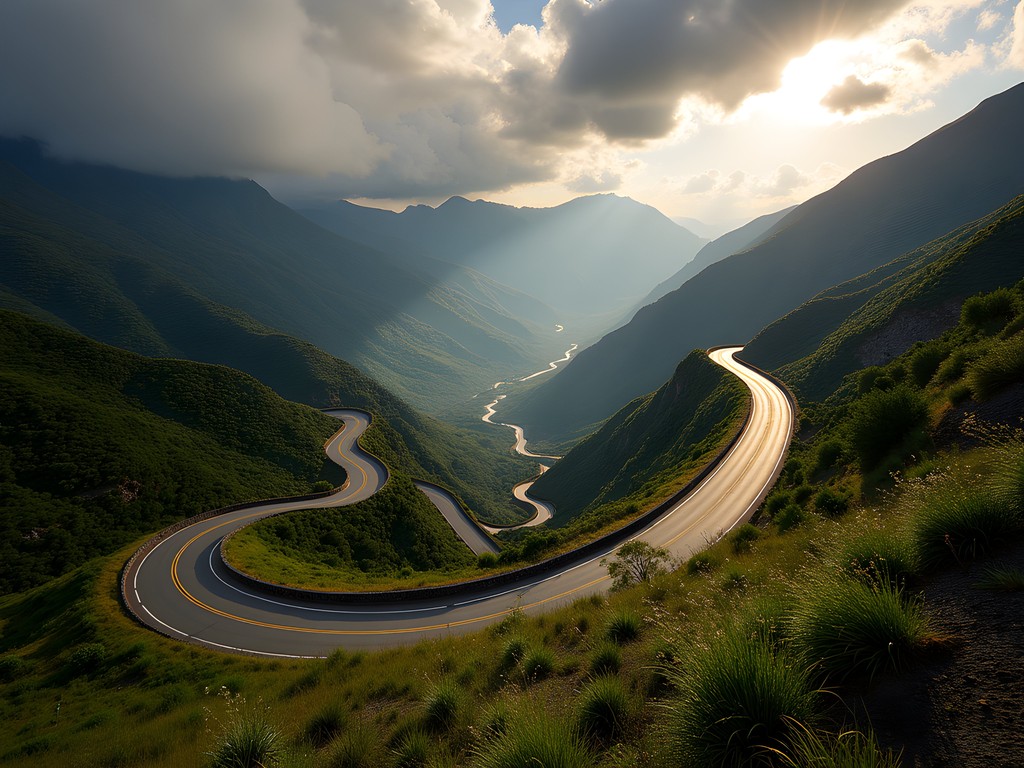
💡 Pro Tips
- Book mountain route buses a day in advance during peak season (December-February)
- Start day trips early to maximize daylight hours and avoid afternoon thunderstorms
- Bring layers for mountain excursions as temperature variations can be extreme
Navigating Like a Local: Insider Transportation Tips
After a week of crisscrossing Tucumán by every available means, I've collected insights that transform the experience from tourist transportation to authentic local navigation.
Understanding Argentine Timing: Perhaps the most valuable adjustment I made was embracing what locals call "la hora argentina" (Argentine time). Public transportation rarely adheres to precise schedules—buses might arrive anywhere from on time to 15 minutes late. This isn't considered problematic but rather an accepted rhythm of life. Building buffer time into your schedule prevents frustration and allows for serendipitous encounters that often become trip highlights.
Communication Strategies: While many younger Tucumanians speak some English, transportation interactions typically happen in Spanish. I found that learning a few key phrases made a significant difference:
- "¿Este colectivo va a...?" (Does this bus go to...?)
- "¿Cuánto cuesta hasta...?" (How much to...?)
- "Por favor, avíseme cuando lleguemos a..." (Please let me know when we reach...)
I keep these and other essential phrases in a small pocket notebook that's always accessible. Bus drivers and taxi drivers consistently responded with patience and often additional helpful information when I made these basic language attempts.
Navigating Strike Action: Public transportation strikes (paros) occur periodically throughout Argentina. During my stay, a half-day bus strike required quick adaptation. Staying informed through local news sources or asking at your accommodation about potential disruptions allows you to adjust plans accordingly.
Sunday Considerations: Sunday transportation in Tucumán operates on significantly reduced schedules. Bus frequency drops dramatically, and many services end earlier in the evening. This cultural rhythm reflects the importance of family time in Argentine culture. Rather than fighting this pattern, I embraced Sunday as a walking day, exploring neighborhoods near my accommodation and enjoying the slower pace.
The Art of the Queue: Bus stops in Tucumán often lack formal queuing systems, yet there's an unspoken order that locals understand intuitively. When joining a group waiting for a bus, a simple "¿Último?" (Who's last?) helps you identify your place in the sequence. This small cultural adaptation marks you as someone who respects local customs.
These nuances of transportation reflect broader cultural values—the flexible relationship with time, the importance of communication attempts regardless of fluency, and the community-oriented approach to public spaces. As a documentary filmmaker, I've found that transportation systems often reveal the heart of a culture more authentically than tourist attractions ever could.
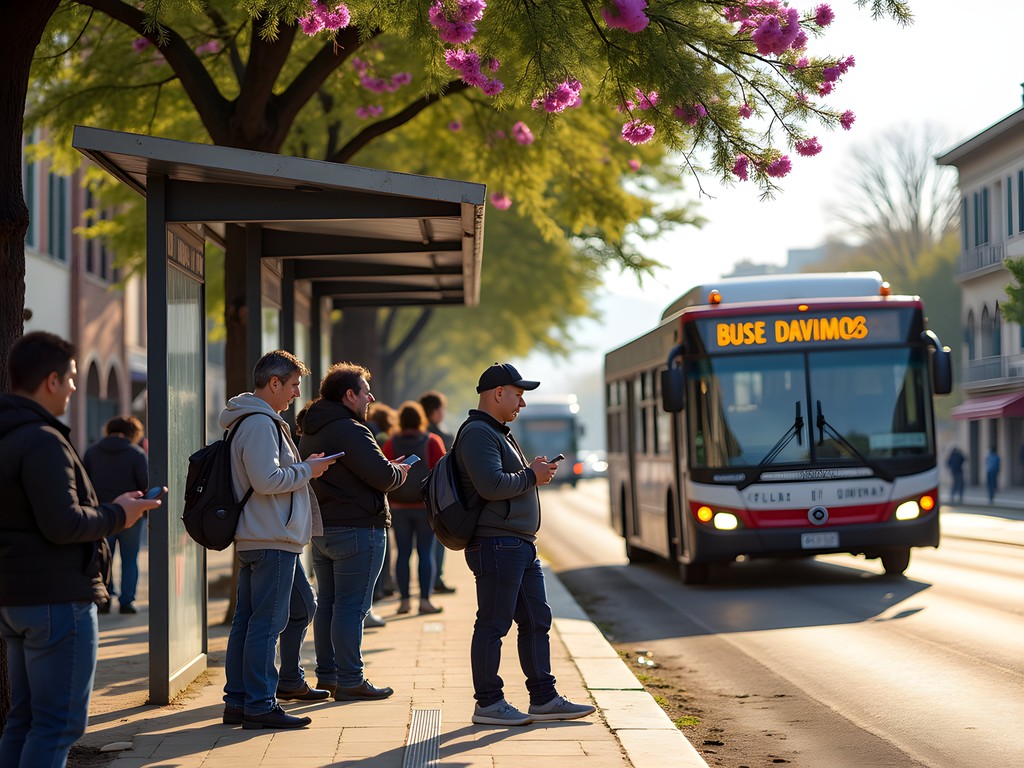
💡 Pro Tips
- Download the 'Cuándo Llega' app to track real-time bus arrivals in Tucumán
- Keep small bills (100 and 200 peso notes) for transportation as drivers and kiosks rarely accept large denominations
- Learn basic directional phrases in Spanish to make navigation significantly easier
Final Thoughts
As my week in Tucumán drew to a close, I found myself lingering at a café near Plaza Independencia, watching the transportation dance of the city with newfound understanding. The buses, taxis, bicycles, and pedestrians moved in a choreography that now felt familiar—a rhythm I had learned to join rather than merely observe. Tucumán's transportation system, like the city itself, rewards those willing to embrace its patterns and peculiarities. Beyond the practical value of knowing how to navigate from point A to B lies a deeper experience of connection to place and people. Whether you're tracing the historic streets where Argentine independence was born, ascending mountain roads to Tafí del Valle, or simply crossing town to sample the region's famous empanadas tucumanas, how you move through this northern Argentine gem becomes part of the story you'll tell. Pack your curiosity, patience, and sense of adventure—Tucumán's transportation network awaits as your gateway to authentic northern Argentine experiences.
✨ Key Takeaways
- Tucumán's compact historic center is ideal for walking exploration, while the extensive bus network connects to outlying attractions
- The SUBE card is essential for budget travelers using public transportation frequently
- Spring weather patterns make morning the ideal time for walking tours and outdoor activities
- Day trips to surrounding natural areas and historical sites provide essential context for understanding Tucumán's significance
📋 Practical Information
Best Time to Visit
Spring (September-November) or Fall (March-May)
Budget Estimate
$30-50 USD per day including accommodation and transportation
Recommended Duration
3-5 days for city exploration, 7+ days if including day trips
Difficulty Level
Intermediate


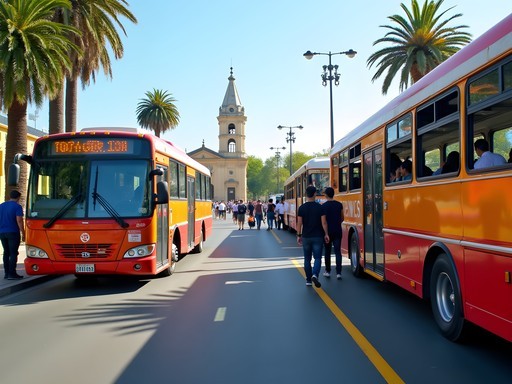

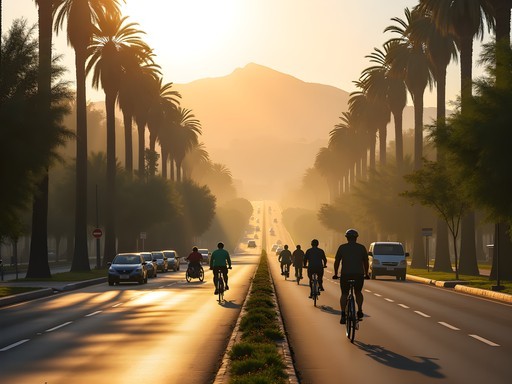
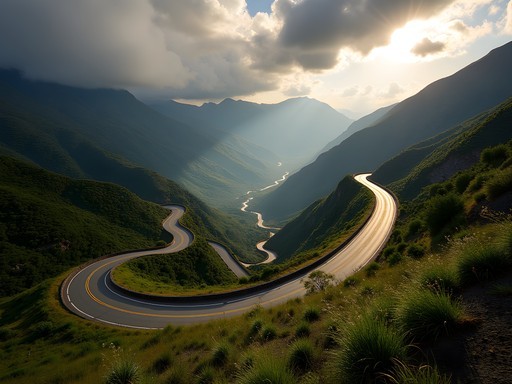
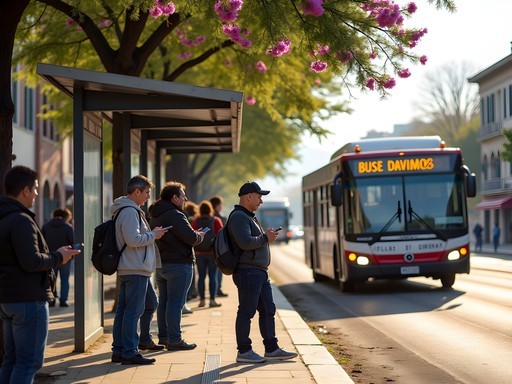


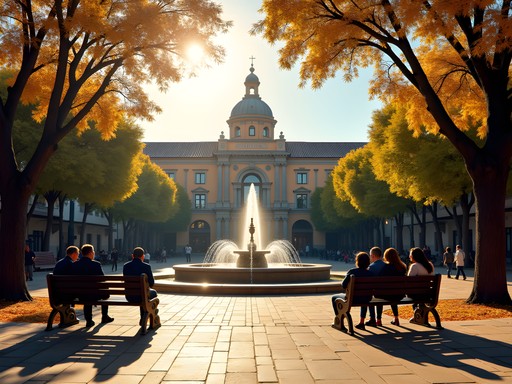

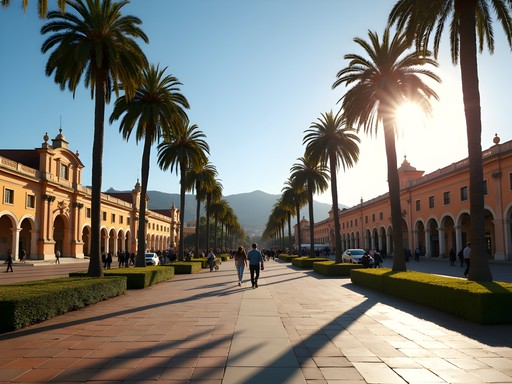

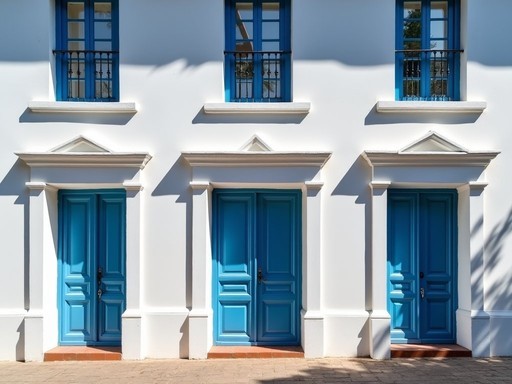



Comments
adventureadventurer7089
Which neighborhood would you recommend staying in for easy access to transportation? First time visitor here!
Yuki Hunter
Centro Histórico is your best bet - you'll be within walking distance of most attractions and have easy access to all bus lines. Plaza Independencia area is particularly convenient!
Bryce Diaz
Yuki, your transportation guides never disappoint! I was in Tucumán last summer and followed your advice on using the urban bus system. That route 118 you mentioned saved me so much time getting between the historical center and Parque 9 de Julio. One tip I'd add for fellow travelers - I downloaded the offline map of Tucumán on my navigation app before arriving, which was a lifesaver when trying to find bus stops without using data. The locals were incredibly helpful too - an elderly gentleman actually walked me three blocks to make sure I found the right stop when I looked confused!
islandace
First time going to Argentina next month! Is it easy to get from the airport to downtown without knowing Spanish?
wanderlustace
Not the author but I was there last year! Airport taxis have fixed rates and most drivers know basic English. Just show them your hotel address and you'll be fine. Enjoy!
islandace
Thanks for the tip! That's a relief.
blueguy6754
Great guide! How safe is the public bus system at night? Planning to visit in December and wondering if I should stick to taxis after dark.
Yuki Hunter
Thanks for asking! The buses are generally safe until around 9pm, but after that I'd recommend taxis or remises (local car services) - they're not too expensive and give more peace of mind, especially if you're not familiar with the area.
blueguy6754
Perfect, thanks for the quick response! Looking forward to exploring Tucumán.
Frank Garcia
Just returned from Tucumán last month and can confirm this guide is spot-on. For fellow backpackers, I'd add that the SUBE card Yuki mentions is absolutely essential - I made the mistake of not getting one immediately and wasted time figuring out how to pay for buses. You can get them at most kioskos (convenience stores) for about 90 pesos. Also worth noting that while the city center is walkable, I found using my travel daypack perfect for exploring - compact enough for city use but enough space for water bottles, which you'll need in the summer heat. The walking tour from Plaza Independencia to Parque 9 de Julio was my favorite day - absolutely free and gives you a great feel for the city's layout.
wildway
Good call on the SUBE card. Is it the same one that works in Buenos Aires?
Frank Garcia
Yep, exactly the same! If you already have one from BA, it'll work perfectly in Tucumán. Just make sure it's loaded with enough credit.
coffeevibes
Those bus fares are so cheap compared to Buenos Aires! Definitely taking notes for my visit.
beachninja
Those morning photos of Plaza Independencia are STUNNING! 😍 Makes me want to book a trip right now! Anyone know if September is a good time to visit?
Frank Garcia
September is actually perfect! Spring is just starting, temperatures are mild (15-25°C), and you avoid the summer crowds. I was there last September and the jacaranda trees were beginning to bloom - adds an amazing purple backdrop to all your photos.
Megan Martin
Excellent breakdown of transportation options, Yuki. I was in Tucumán last quarter for a business conference and found the remis services particularly reliable. For business travelers staying near the government district, I'd recommend downloading the TucuTaxi app before arriving - it works similar to Uber but connects to local licensed drivers. The fare estimator helped me budget travel expenses accurately. Also worth noting that many hotels have relationships with specific remis companies that offer flat rates to common business destinations.
coffeevibes
Thanks for the TucuTaxi tip! Just downloaded it for my trip next week.
happytime
I LOVED Tucumán when I visited last year! Those morning walks through Plaza Independencia were magical. The local buses were confusing at first but once I got the hang of it, super convenient. Did anyone else try those bike rentals near the university? Such a fun way to explore!
travelperson
Great post! How reliable are the buses for getting to Casa Histórica? I'll be there with limited time and wondering if I should just use taxis instead.
Yuki Hunter
The buses are actually quite reliable for reaching Casa Histórica! Lines 1, 5, and 8 all stop nearby. But if you're really pressed for time, a taxi is only about 150-200 pesos from the city center and eliminates any waiting.
travelperson
Thanks Yuki! That's super helpful. I think I'll try the buses then.
Venture X
Premium card with 2X miles, $300 travel credit, Priority Pass